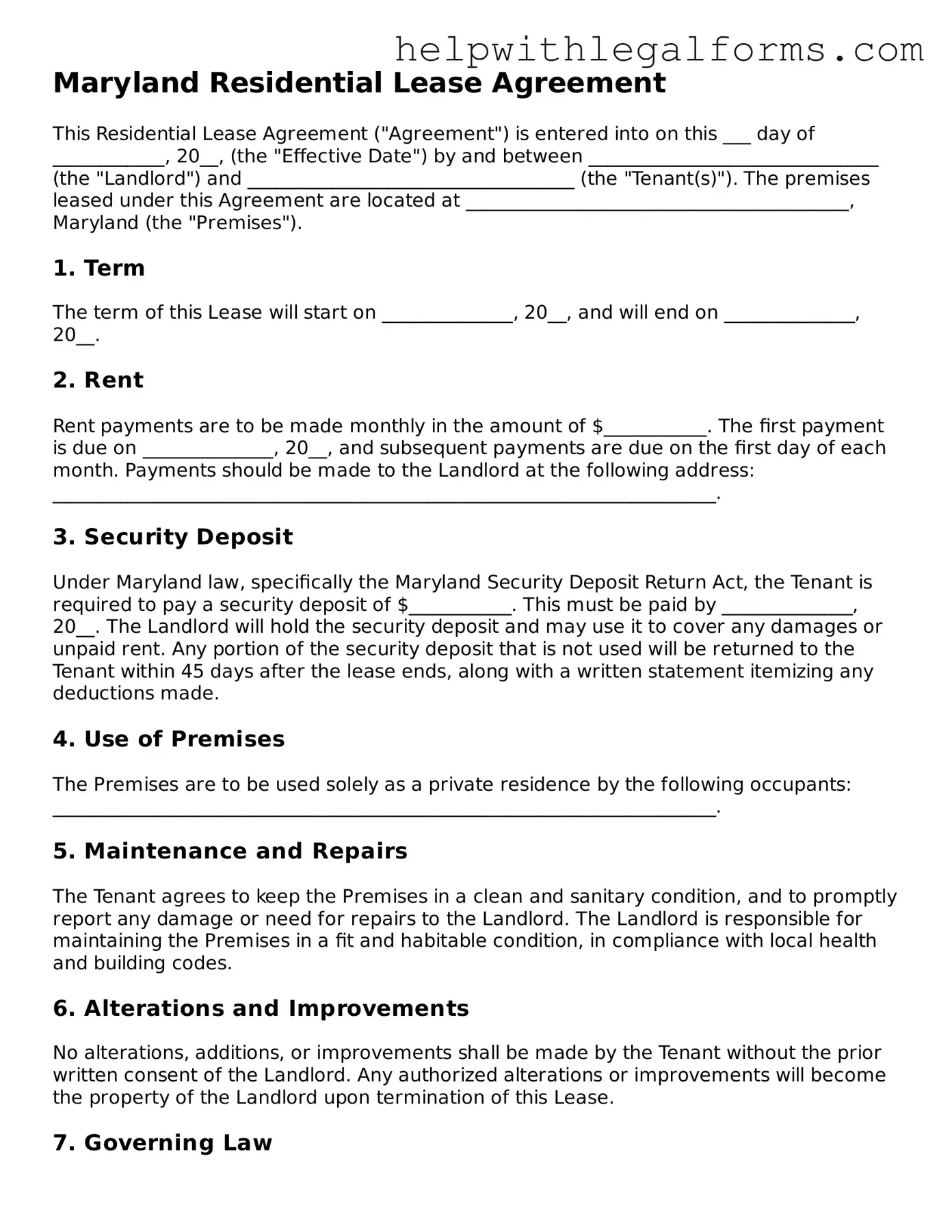Maryland Residential Lease Agreement
This Residential Lease Agreement ("Agreement") is entered into on this ___ day of ____________, 20__, (the "Effective Date") by and between _______________________________ (the "Landlord") and ___________________________________ (the "Tenant(s)"). The premises leased under this Agreement are located at _________________________________________, Maryland (the "Premises").
1. Term
The term of this Lease will start on ______________, 20__, and will end on ______________, 20__.
2. Rent
Rent payments are to be made monthly in the amount of $___________. The first payment is due on ______________, 20__, and subsequent payments are due on the first day of each month. Payments should be made to the Landlord at the following address: _______________________________________________________________________.
3. Security Deposit
Under Maryland law, specifically the Maryland Security Deposit Return Act, the Tenant is required to pay a security deposit of $___________. This must be paid by ______________, 20__. The Landlord will hold the security deposit and may use it to cover any damages or unpaid rent. Any portion of the security deposit that is not used will be returned to the Tenant within 45 days after the lease ends, along with a written statement itemizing any deductions made.
4. Use of Premises
The Premises are to be used solely as a private residence by the following occupants: _______________________________________________________________________.
5. Maintenance and Repairs
The Tenant agrees to keep the Premises in a clean and sanitary condition, and to promptly report any damage or need for repairs to the Landlord. The Landlord is responsible for maintaining the Premises in a fit and habitable condition, in compliance with local health and building codes.
6. Alterations and Improvements
No alterations, additions, or improvements shall be made by the Tenant without the prior written consent of the Landlord. Any authorized alterations or improvements will become the property of the Landlord upon termination of this Lease.
7. Governing Law
This Agreement shall be governed by and construed in accordance with the laws of the State of Maryland. Any disputes arising under this Agreement shall be subject to the exclusive jurisdiction of the state and federal courts located in Maryland.
8. Entire Agreement
This document and any attached addenda constitute the entire agreement between the parties with respect to the subject matter hereof and supersedes all prior agreements, whether written or oral. Any modifications to this Agreement must be in writing and signed by both parties.
9. Signatures
This Agreement is entered into when signed by both parties. Their signatures below signify their acceptance of the terms and conditions as stated in this Maryland Residential Lease Agreement.
Landlord's Signature: ______________________________________ Date: ______________, 20__
Tenant's Signature: ______________________________________ Date: ______________, 20__
